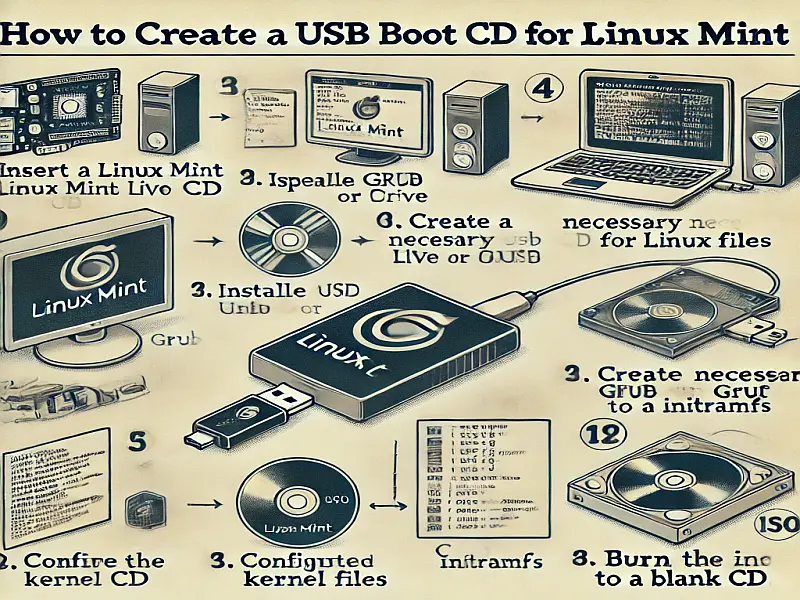To make a USB Boot CD for Linux Mint that allows you to boot Linux Mint from a USB flash drive on systems that do not support USB booting directly, follow the steps below. This guide will walk you through creating a CD that uses the GRUB bootloader to load the Linux Mint kernel and initrd, then detects the USB to load the full Linux Mint OS.

What is Linux Mint & Why use a USB Boot CD?
Linux Mint is a popular, user-friendly Linux distribution that is based on Ubuntu and Debian. It's known for its ease of use, stability, and a Windows-like interface, making it an excellent choice for users transitioning from other operating systems. Linux Mint includes a variety of free software and offers features like an intuitive software manager, high customization options, and strong community support.
Linux Mint is often recommended for older computers because it's lightweight and can run on a range of hardware. However, some older systems may lack support for direct USB booting, which is why this guide to creating a USB Boot CD can be especially useful.
Linux Mint USB Boot CD Requirements
- Computer with BIOS that does not support USB booting.
- Linux Mint Live CD/USB or a PC capable of booting from USB.
- CD Burner and a blank CD.
- USB flash drive with Linux Mint preinstalled.
Note: This tutorial was originally written in 2008. Most modern PCs now support USB booting. If you simply need to create a bootable Linux Mint USB, see our guide on creating a Linux Mint bootable USB.
How to Create a USB Boot CD for Linux Mint
To create a USB Boot CD for Linux Mint, simply follow these steps:
- Boot into Linux Mint: Insert your Linux Mint Live USB or CD, then restart the computer and boot from it.
- Install GRUB: Open a terminal (
Menu > Terminal) and type:sudo apt-get install grub - Create Directory Structure:
mkdir -p mbcd/boot/grub - Copy GRUB Bootloader:
sudo cp /usr/lib/grub/i386-pc/stage2_eltorito mbcd/boot/grub - Create GRUB Menu: Open a new file for the GRUB menu:
sudo nano mbcd/boot/grub/menu.lstAdd the following content and save:
title Start Linux Mint from USB root (cd) kernel /boot/vmlinuz file=/cdrom/preseed/mint.seed boot=casper noprompt cdrom-detect/try-usb=true persistent initrd /boot/initrd.lz boot - Copy Kernel:
cp /cdrom/casper/vmlinuz mbcd/boot - Edit Initramfs Modules: Open the modules file:
sudo nano /etc/initramfs-tools/modulesAdd these lines and save:
usbcore usb-storage uhci_hcd ohci_hcd ehci_hcd sd_mod scsi_mod - Set Initramfs Wait Time: Edit
initramfs.confto ensure USB devices are detected:sudo nano /etc/initramfs-tools/initramfs.confAdd this line at the end and save:
WAIT=8 - Create Initrd:
sudo mkinitramfs -o mbcd/boot/initrd.lz - Create ISO: Generate the bootable ISO file:
mkisofs -R -b boot/grub/stage2_eltorito -no-emul-boot -boot-load-size 4 -boot-info-table -o mintusbcd.iso mbcd - Burn ISO to CD: Insert a blank CD and burn the ISO:
brasero -i mintusbcd.iso(Replace
braserowith any CD-burning tool if preferred)
If all went well, you should now have a USB boot CD for Linux Mint, enabling you to boot Linux Mint from a USB drive on computers that do not natively support USB booting.
